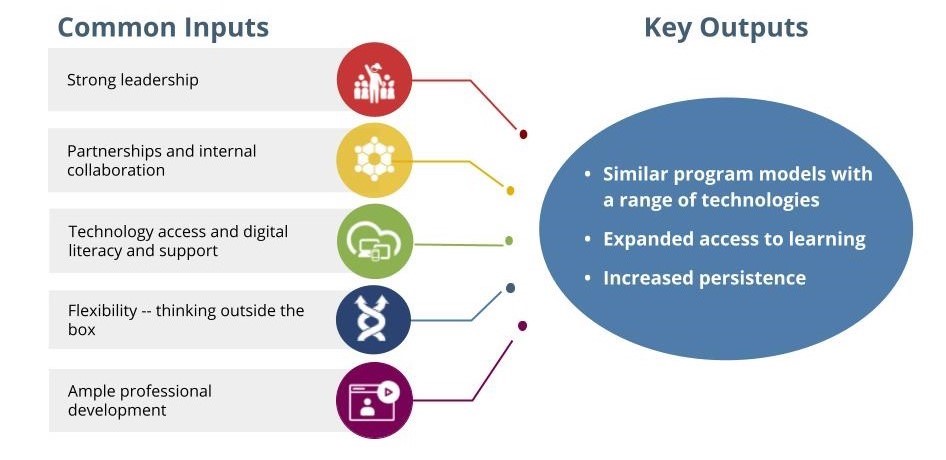Welcome to the Remote ESOL Project!
This site holds information for teachers, administrators, policy makers, and researchers interested in leveraging educational technology to support enrollment, attendance, achievement, and completion in remote ESOL programming for adults. The information here stems from six months of research done in 2021 to uncover examples of promising practices and programming most of which sprung up in response to the COVID-19 pandemic – when remote instruction and distance education were the only modalities of learning possible in many places.
Webinar Recording
Check out our national webinar: Innovative Remote ESOL Program Models and Promising Practices.
What We Learned
Though remote ESOL instruction and the supports that make it possible are shaped by local, regional, and state-level context, we observed common characteristics in the programs we grew to know across the country.
- While there was ample forward momentum on increasing use of technologies, technology could be further leveraged to accelerate learning by more programs making better use of it to personalize, differentiate, and extend instruction.
- There were common inputs that led to shared key outputs that supported remote ESOL instruction.

Inputs
- Partnerships and internal collaboration were critical. Collaboration was at the heart of successful program and workflow redesign and meeting basic needs (e.g., technology access, wraparound supports).
- Strong program leadership guided efforts. Committed leaders advocated for resources, flexibility in policies, and provided additional compensation for teachers and staff.
- Support for technology access and digital literacy was critical. Many learners needed personalized help acquiring and using devices and internet to attend classes.
- Innovation needed flexibility to grow. The relaxing of federal and state reporting and accountability requirements gave room to experiment and figure out what works.
- Ample professional development (PD) made remote learning possible. Abundant PD was offered during the pandemic, and many programs supported paid time for teacher engagement.
Outputs
- Programs used similar models for remote instruction with a range of technologies. Most implemented a combination of program models: live synchronous, independent asynchronous, and hybrid of both.
- Remote instruction supported expanded access to learning. Anytime and anywhere learning models removed traditional constraints of time and place for many learners.
- Innovations increased persistence. Many programs had fewer students, but retention was high due to flexible design and personalization of instruction and supports to meet learners’ needs.
Map of Sites
We interviewed leaders from 35 programs across the US, including statewide programs in Minnesota, Pennsylvania, and California, and several nationwide learning programs: USA Learns; Intercambio, CC English; National Partnership for New Americans, English as a Gateway – English Innovations; and National Immigration Forum, English at Work. For a complete list of programs see our Methodology page.
Remote ESOL team
Silja Kallenbach, Consultant
Jen Vanek, Director of Digital Learning and Research, World Education
Alison Ascher Webber, Senior Technical Advisor, World Education
Annalisa Crowe, Research Associate, World Education
Johan Uvin, Lead Consultant
Catalina González, Senior Technical Advisor, World Education
Navjeet Singh, Consultant
